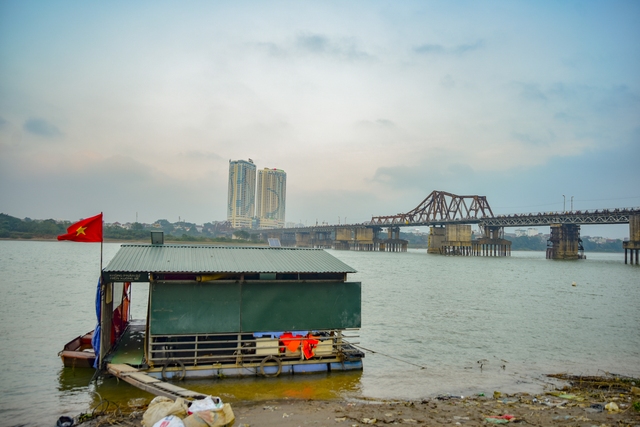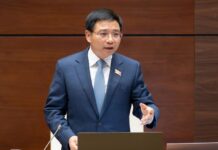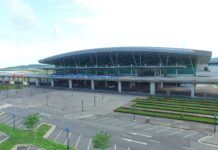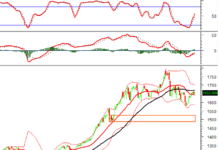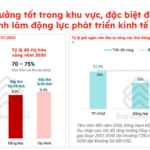
Contrary to the hustle and bustle of central Hanoi, where houses are being advertised for hundreds of millions to billions of dong per square meter, many places have virtually no land left, making it difficult for urban space to develop. On the other hand, land along the Red River has long been sought after by authorities and many businesses for the purpose of expanding the space for Hanoi.
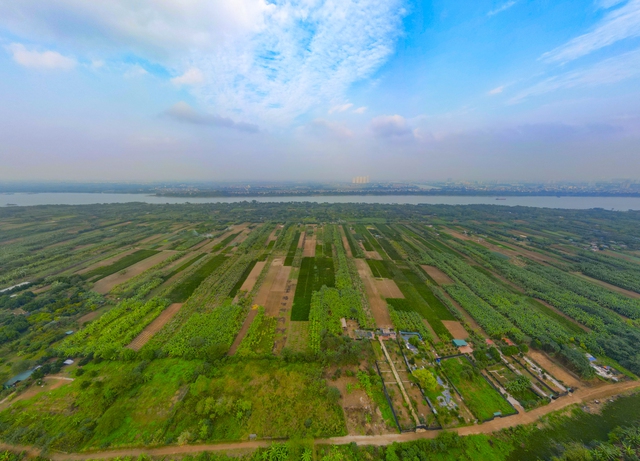
It is known that the Red River flows through Hanoi, leaving behind large areas of land and beautiful landscapes. To make the most of the large and valuable land, the Hanoi city government approved the 1/5,000 urban planning project for the Red River at the end of March 2022.

According to the urban planning of the Red River, which falls within the administrative boundaries of 55 wards and communes in 13 districts, stretching 40 km from the Hong Ha bridge to the Me So bridge. The planned area covers nearly 11,000 ha, equivalent to the total area of 8 districts: Hoan Kiem, Ba Dinh, Tay Ho, Cau Giay, Dong Da, Hai Ba Trung, Thanh Xuan, and Nam Tu Liem. Of this, the Red River accounts for 3,600 ha (33%), the riverbank land accounts for over 5,400 ha (50%). The remaining area includes the constructed area with historical villages such as Bat Trang, Van Khe, Trang Viet; the outer neighborhoods, social and technical infrastructure projects, etc. Map of the location of the Red River banks in the planned area.

The estimated maximum population size in this area is about 300,000 by 2030. Of this, the current population undergoing renovation and renovation is 215,000, and the population of new residential groups is 85,000. The main function of the Red River urban planning area is to serve as a space for flood discharge from the Red River section through the central urban area. At the same time, this is seen as an opportunity for Hanoi to make use of its large and valuable land resources, like a “gold mine”, to create proactive green and public spaces.

In reality, the planning of the two banks of the Red River has been mentioned many times, from decades ago, with many related studies and proposals, but none have been realized. Typical of this is the Tran Song Hong project (also known as Song Hong City), which was proposed by Singapore investors to be built on land outside the dike in the An Duong area, with an expected total investment of VND 240 billion. However, due to various obstacles, especially hydrological issues, the project has not been implemented.

Then, in mid-2006, leaders of Hanoi and the mayor of Seoul (South Korea) signed an agreement to cooperate in planning, renovating, and developing the two banks of the Red River. After a year, the urban planning project for the two banks of the Red River was officially introduced to the public. According to calculations by the consulting firm, the project is divided into 4 areas with a total area of 1,500 ha and a total investment of over USD 7.1 billion, to be implemented from 2008 to 2020. However, by 2008, the project had stalled.

In 2016, Hanoi implemented the planning of the Red River, with the requirement to study and develop a master plan along the river to ensure flood prevention, create a modern city, and exploit the land efficiently. Subsequently, three businesses, including Sun Group, Vingroup, and Geleximco Corporation, voluntarily contributed funds to study the planning of the two banks of the Red River according to 2 options.

One is to build roads and dikes to ensure the exploitation of urban development land, and maintain the safety of the inner city (flood prevention on alarm level 3), replacing the current dike route. The other is to plan the construction of roads and dikes to ensure flood prevention on alarm level 2. In addition, the planning also includes the construction of a system of lakes and canals to serve water drainage, supporting the inner dike route (the current dike) to ensure flood prevention on alarm level 3.

In 2017, one of the 3 companies involved in the project, Geleximco, proactively invited the Hangzhou Urban Planning and Design Institute to participate in the study and development of the 1/5,000 master plan for the Red River. However, later, the Hanoi People’s Committee stated that it had not agreed to allow any foreign consulting firm to provide advice. After many years, since Hanoi’s leaders began to consider the urban planning of the two banks of the Red River, the city has completed the detailed plan, which was approved at the end of March 2022, as mentioned above.

After being approved, by November 2022, four districts including Hoan Kiem, Ba Dinh, Tay Ho, and Long Bien proposed that the city create a comprehensive cultural park in the middle of the Red River. The area in the middle of the Red River is mainly located in Hoan Kiem district (two wards of Chuong Duong and Phuc Tan) with an area ranging from 15.3 to 18 ha and a riverbank length of 3.8 km.

Currently, this area is still in a chaotic and unmanaged state. Most of the land in this area is self-cultivated by nearby residents for gardening, while the rest is vacant land covered in weeds. This is also the “floating village” where many households live. However, the planning of the Red River urban area aims not only to reorganize the space on both sides of the river but also specifies who can go and stay…
